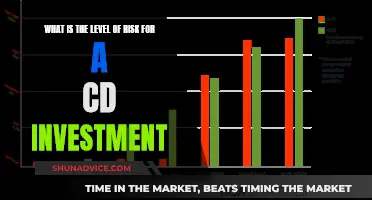
Microsoft Excel is a powerful tool for managing personal investments. It can be used to track investments, calculate performance, and assess risk, profit, and loss. With Excel, you can create a comprehensive investment tracking spreadsheet that provides valuable insights and helps you make informed decisions about your financial future.
Excel offers a range of functions specifically tailored to investment management, such as automatic calculations of metrics like standard deviation, percentage return, and profit and loss. It also enables you to visualise the performance of your stocks at a glance and make comparisons between different types of investments.
Additionally, Excel provides versatility in data manipulation, allowing you to create formulas to calculate differences in asset prices, percentages, and profit and loss. You can also connect Excel to real-time stock tracking information, ensuring you always know the value of your investments.
Overall, Excel is a valuable tool for anyone looking to take control of their personal investments and make more informed financial decisions.
| Characteristics | Values |
|---|---|
| Purpose | Tracking and managing personal investments |
| Tools | Microsoft Excel, Google Sheets |
| Functions | Calculating performance, risk, profit and loss, standard deviation, etc. |
| Data | Account name, stock ticker symbol, investment name, category, number of shares, price, value, etc. |
| Features | Real-time updates, data visualization, compatibility with other devices, user-friendliness, etc. |
What You'll Learn

Tracking investments with Excel
Excel is a powerful tool for tracking your investments and visualising your portfolio. It can be used to calculate performance and the degree of volatility of an asset or portfolio, and it can also help you make informed decisions about buying or selling stocks. Here are some tips on how to use Excel to track your investments:
- Decide on the data you want to include: This may include the date, entry price, number of shares, closing prices, difference between closing and entry price, percentage return, profit and loss, and standard deviation.
- Use formulas: Many values in your spreadsheet can be calculated automatically using Excel formulas. For example, to calculate the difference between an asset's current price and its entry price, you can use the formula = (current price - entry price). You can also use formulas to calculate percentage return, profit and loss, and standard deviation.
- Utilise linked data: Excel's 'Stocks' feature connects to an online data source, allowing you to keep your stock prices updated. You can also use the STOCKHISTORY function to retrieve historical data about a financial instrument.
- Create a separate sheet for each stock: This will make it easier to track individual investments and compile data for your entire portfolio.
- Hide extraneous data: You can hide columns or rows of data that you don't need to see all the time. This will create a streamlined, easy-to-read spreadsheet.
- Explore portfolio management software: There are commercial products available that work in concert with Excel to help with portfolio management. These can provide additional tools and functionality for tracking your investments.
- Customise your spreadsheet: Excel spreadsheets can be as simple or complex as you need them to be. You can include only the data that is relevant to you and format it in a way that makes sense for your investment strategy.
- Enrol in an Excel course: If you're unfamiliar with Excel or want to improve your skills, consider taking an online Excel course. This can help you get the most out of the software and improve your investment tracking capabilities.
By following these tips, you can effectively use Excel to track your investments, make informed decisions, and visualise your portfolio's performance.
The Cycle of Savings, Borrowing, and Investing: Understanding the Trio
You may want to see also

Creating difference formulas
Understanding the Basics
To calculate the difference between two values in Excel, you can use the subtraction operation. Simply input a formula into a new blank cell, such as "=A1-B1", where A1 and B1 are the two values you want to compare. You can also change the order of the cell references in the formula, such as "=B1-A1", to calculate the difference between the same two values. Ensure that the columns you are using contain the same data type, as Excel cannot perform calculations between different data types.
Applying Difference Formulas to Time and Dates
Difference formulas can also be applied to time and date calculations. To find the difference between two times, use a formula such as "=C1-A1" and select the custom format "h:mm" from the Format Cells options to display the result in hours and minutes. Alternatively, you can use the TEXT() function, such as "=TEXT(C1-A1,"h:mm""), which tells Excel to display the result in the hour:minute format.
For date calculations, a simple subtraction formula, such as "=B2-A2", will give you the number of days between two calendar dates. If you want to calculate the number of weekdays between two dates, you can use the NETWORKDAYS() function. For example, "=NETWORKDAYS(B2,A2)" will return the number of weekdays between the dates in cells B2 and A2.
Calculating Percentage Difference
The % Difference Formula in Excel allows you to find the percentage change between two numbers. You can choose either of the numbers as the base number. The formula will output different results depending on which number is selected as the base. For example, if the base number is 120 and the new number is 11, the formula will output -90.83%, indicating that the new number is 90.83% smaller than the base number. However, if you switch the base number to 11 and the new number to 120, the result will be 990.91%, showing that the new number is 990.91% bigger than the base number.
Automating Calculations with Cell References
Instead of manually typing the values into the formula, you can use cell references for a more dynamic approach. For instance, if you have the numbers "5" and "3" stored in cells "A1" and "B2", respectively, you can use the formula "=A1-B2" to find the difference. This will automatically calculate the difference between the values in those cells, and the result will appear in the selected cell.
Tracking Investments with Difference Formulas
Difference formulas are particularly useful for tracking investments and calculating metrics such as profit or loss. For example, you can calculate the difference between an asset's current price and its entry price by using the formula "=current price cell - entry price cell". This will give you the absolute difference, which you can then format as currency to display the profit or loss for that asset.
By utilizing difference formulas in Excel, you can efficiently track and analyze your investments, making informed decisions based on accurate and automated calculations.
Smart Saving and Investing Strategies for Your Kids' Future
You may want to see also

Creating profit/loss formulas
Microsoft Excel is a powerful tool for tracking and managing your investments, allowing you to calculate metrics such as profit and loss. Here's a detailed guide on creating profit/loss formulas in Excel for personal investment management:
Understanding the Basics
Firstly, decide on the data you want to include in your Excel spreadsheet. This could include the date, entry price, number of shares, closing prices, and profit and loss for each periodic closing price.
Creating the Profit/Loss Formula
To create the profit and loss formula, follow these steps:
- Click on the cell where you want the profit and loss value to appear.
- Type the equals sign (=) to indicate the start of a formula.
- Click on the cell that contains the difference between the current price and the entry price. This value can be calculated manually or by using the formula explained in the previous sections.
- Type an asterisk (*) to represent multiplication.
- Click on the cell that contains the number of shares.
- Press Enter, and the profit and loss value will appear in the selected cell.
Formatting the Data
You may need to format the data to ensure it displays in the correct currency format. To do this, highlight the column, right-click, and select "Format Cells." Then, select the appropriate currency format.
Copying the Formula
Once you have created the formula for one set of data, you can easily copy it to other corresponding cells. Simply click and drag the formula to the cells you want to apply it to.
Customizing the Spreadsheet
You can customize your spreadsheet by adding or removing categories and line items. To add a new category, simply insert a new row and create a custom title. To remove a category, delete the unnecessary row and adjust the formulas accordingly.
Maintaining the Profit and Loss Account
It is important to maintain your profit and loss account over time to make informed business decisions. Create columns for each month or quarter to track financial trends. You can also create graphs to visualize changes in data over time.
Using Templates
If you're unsure where to start, consider using a pre-made template. Websites like Smartsheet and Corporate Finance Institute offer free Excel templates for creating profit and loss statements. These templates can be easily customized to suit your needs.
By utilizing the power of Excel formulas and functions, you can efficiently track and manage your personal investments, making informed decisions to optimize your financial portfolio.
Understanding Correlation: Building a Better Investment Portfolio
You may want to see also

Viewing a portfolio in Excel
When using Excel to manage your personal investments, you can compile data from individual sheets to get a sense of all your holdings at a glance. This allows you to import a series of stocks' data into one sheet.
To view your portfolio in Excel, you can follow these steps:
- Enter your data: The first step is to decide what data you would like to include. This could include the date, entry, size (how many shares), closing prices for specified dates, the difference between the closing price and the entry price, the percentage return, profit and loss for each periodic closing price, and the standard deviation.
- Create formulas: You can use Excel's functions to automatically calculate metrics such as the standard deviation, percentage return, and overall profit and loss. For example, to calculate the percentage return, you can use the formula: (price-entry) ÷ entry.
- Visualize your portfolio: By using charts and graphs, you can visualize your portfolio's performance. For instance, bar graphs can show how each sector or security is performing, helping you identify the industries or securities contributing the most to your gains.
- Connect to real-time data: Excel can be connected to real-time stock tracking information, allowing you to always see the current value of your stocks. To get a stock quote, type in the ticker symbol, then select Data > Stocks. Excel will then convert your cells to the stocks data type, displaying live stock information.
- Analyze and compare: With your data and calculations in place, you can analyze and compare the performance of different investments. You can also compare your portfolio's performance against benchmarks like the Dow Jones, DAX, or Nasdaq.
By utilizing these features in Excel, you can effectively view and manage your personal investment portfolio.
JPMorgan's Emerging Manager Program: Investment Opportunities?
You may want to see also

Analysing and comparing investments
Excel can be used to calculate future performance, degrees of risk, profit and loss. You can also compare your performance against benchmarks such as Dow Jones, DAX and Nasdaq.
To get started, you will need to input some basic investment information, including the account name, stock ticker symbol, name of the investment, and the category it falls into. You will also need to input the number of shares you own, and the buying price per share.
From there, you can use Excel's functions to calculate metrics such as standard deviation, percentage return, and overall profit and loss. For example, you can calculate the difference between an asset's current price and its entry price, and the percentage return on an asset.
Excel can also be used to calculate more complex metrics, such as the standard deviation of a dataset, which can reveal important information about an investment's risk and volatility.
By connecting Excel to real-time stock tracking information, you can always see how much your stocks are worth and make informed decisions based on the most current data.
A Guide to Investing in Managed Funds
You may want to see also
Frequently asked questions
Excel is a versatile spreadsheet tool that allows you to track your portfolio and visualize the performance of your stocks at a glance. It enables you to calculate future performance, degrees of risk, profit, and loss, and compare different types of investments.
Your Excel investment tracker should include basic investment information such as the account name, stock ticker symbol, investment name, and category. Additionally, you should include the number of shares, price, and value information. You can connect Excel to real-time stock data to always have up-to-date values.
To determine the break-even point, use the formula: = (((Buying Price*Shares Purchased+(Commission*2))/Shares Purchased)-Tax Rate*Buying Price)/(1-Tax Rate). For profit predictions, consider buying price per share, shares purchased, brokerage commission, and tax rates (long-term capital gains rate or federal tax bracket).
Utilize Excel's formulas to create difference, percent return, profit/loss, and standard deviation calculations. This enables you to track investments, calculate performance, and assess volatility. You can also use Excel to view your portfolio as a whole and make informed investment decisions.







